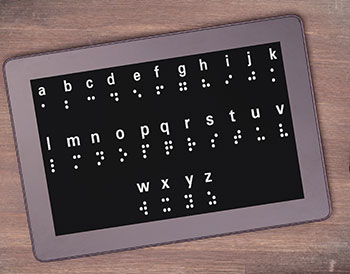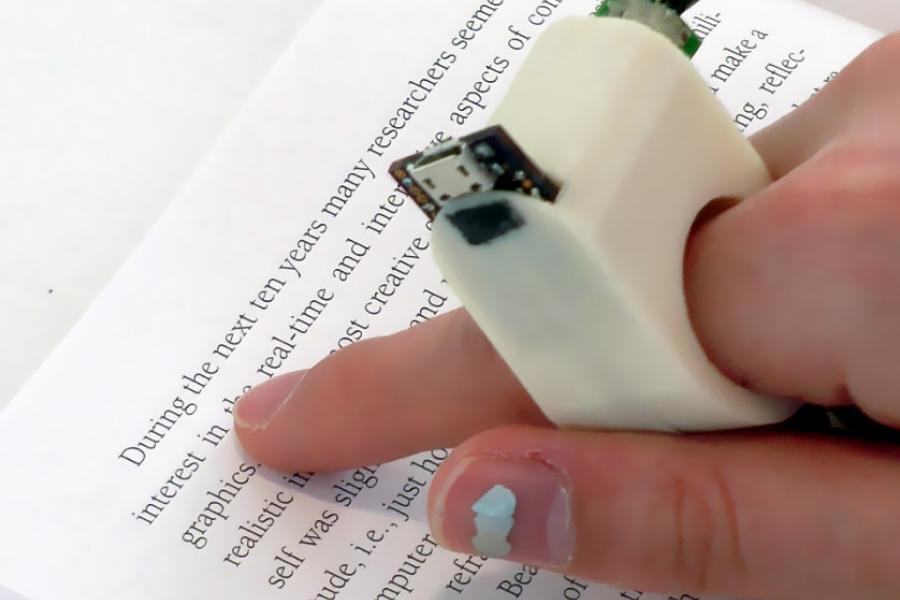Voice-Activated Assistive Devices: Simplifying Everyday Tasks
Empowering Self-reliance With Assistive Modern Technology for the Blind
The assimilation of assistive modern technology into the lives of individuals with aesthetic problems stands for a significant development in advertising independence and self-sufficiency. From innovative display viewers to innovative clever walking canes, these devices not only boost day-to-day navigation and communication however additionally encourage individuals to involve meaningfully in various facets of life. As we discover the myriad advantages and real-world applications of these technologies, it becomes essential to analyze the hidden factors that add to their efficiency and the potential for future developments in this crucial area.
Review of Assistive Technology

The development of assistive technology is grounded in principles of inclusivity and empowerment. Advancements in software program, equipment, and sensory enhancements offer individuals with choices tailored to their particular requirements. From screen viewers that transform message to speech, to tactile devices that convey information via touch, these tools change the means individuals engage with their environments.
Along with sensible applications, assistive innovation promotes greater social incorporation and involvement in various sectors, including education and learning and employment (Speech-to-text devices for low vision). As research study and advancement continue to advance, the potential for assistive technology to additionally enhance the lives of visually impaired individuals stays encouraging, paving the method for a more equitable society where everybody can thrive
Kinds Of Assistive Tools
A range of assistive gadgets have arised to sustain individuals with visual disabilities, each made to fulfill certain requirements and boost day-to-day functioning. These gadgets vary from low-tech services to high-tech developments, providing varied choices for customers.
Low-tech gadgets include magnifiers and large-print materials that assist in reading and writing. Braille tools, such as Braille styluses and slates, make it possible for tactile reading and communication. Alignment and wheelchair aids, like white walking canes, assist users browse their atmosphere safely.
On the higher end of the spectrum, electronic magnifying systems and display viewers use significant support. Digital magnifiers enable customers to enlarge message and pictures on displays, while display viewers transform electronic material right into manufactured speech, assisting in access to information on mobile phones and computers.
Smartphone applications likewise play an important duty, offering features like text acknowledgment and navigating help. Wearable modern technology, such as clever glasses equipped with enhanced reality, is becoming an appealing tool to enhance situational awareness.
Benefits of Assistive Modern Technology
The combination of assistive technology considerably boosts the lifestyle for individuals with visual problems. These modern technologies empower customers by promoting self-reliance, enabling them to browse their atmospheres extra successfully and heart shaped eyeglasses do everyday tasks with better convenience. For example, screen viewers and magnifying software application permit individuals to gain access to digital info, fostering specialist and instructional possibilities that might have formerly run out reach.
In addition, assistive devices such as clever walking sticks and general practitioners applications offer real-time navigating aid, improving movement and security. This increased autonomy not only boosts self-esteem yet also encourages social involvement, allowing customers to participate more completely in their areas.
Assistive technology also assists in interaction, helping individuals link with others with voice recognition and text-to-speech applications. This capacity is crucial for maintaining partnerships and accessing vital info.
In addition, the modification options available with numerous assistive modern technologies make sure that individuals can tailor gadgets to their certain requirements, additionally improving usability and efficiency. In general, the benefits of assistive technology for people with aesthetic problems are profound, advertising a much more inclusive culture where every person can seek their goals and aspirations.
Case Researches and Success Stories
Highlighting the transformative impact of assistive modern technology, countless case research studies highlight exactly how people with aesthetic disabilities have actually effectively integrated these devices right into their lives. One engaging instance involves a college student who utilized display analysis software to navigate academic materials and on the internet resources successfully. This innovation not only facilitated her education yet Get More Information additionally boosted her self-confidence in participating in conversations and group jobs.
One more study includes a specialist who utilizes a mobile phone application made for navigation and item acknowledgment. By utilizing this application, he has actually regained freedom in both his personal and workplace, permitting him to commute separately and engage with associates more efficiently.
Furthermore, a retired person shared her experience with braille e-readers, which allowed her to access a substantial range of literary works and remain connected with her neighborhood via book clubs.
These success tales emphasize the critical role of assistive technology in fostering freedom, improving lifestyle, and promoting social assimilation for individuals with visual impairments (OCR devices for the blind). By welcoming these cutting-edge tools, customers can get over challenges and seize chances that contribute to their individual and professional satisfaction

Future Fads in Assistive Innovation
Advancement in assistive modern technology is poised to redefine the landscape of support for people with visual impairments. Emerging trends highlight the integration of expert system (AI) and artificial intelligence, which improve the capability of devices that assist with navigating and details access. For circumstances, AI-driven applications are currently with the ability of analyzing aesthetic information in real-time, allowing individuals to involve with their atmosphere much more independently.
In addition, the growth of wearable technology is advancing quickly. Smart glasses outfitted with increased reality (AR) can provide audio descriptions of surroundings, changing just how customers interact with public areas. These tools not just promote freedom yet also foster social addition.
Furthermore, the Internet of Things (IoT) is making homes smarter, enabling seamless connectivity between assistive tools and everyday home appliances. This connectivity empowers customers by enabling automated actions and voice-activated controls customized to specific requirements.
Verdict
Finally, assistive innovation plays a critical function in empowering individuals with aesthetic disabilities by improving their freedom and involvement with their surroundings. The diverse series of applications and gadgets offered not just facilitates navigation and interaction yet also promotes social assimilation and chances for individual and professional growth. As improvements continue in this field, the capacity for boosting the high quality of life for those with visual disabilities will broaden, fostering greater freedom and empowerment.
